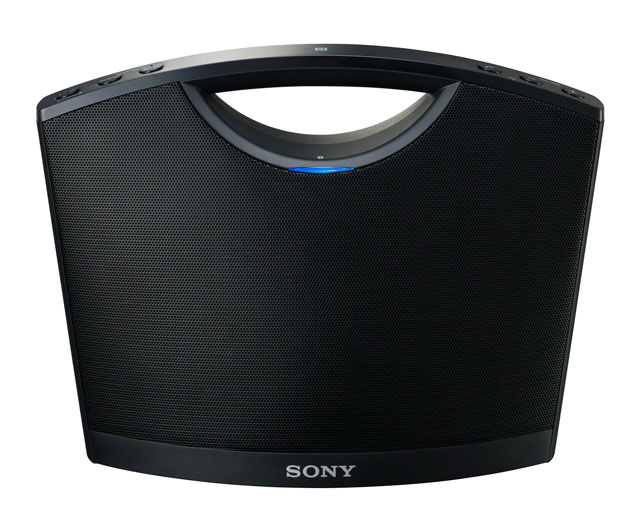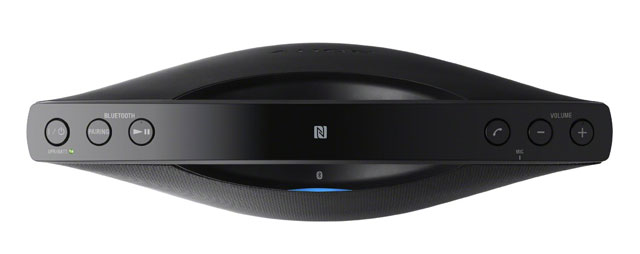
Japanese electronics company Sony didn’t quite lose (but certainly misplaced) the plot for a number of years when it came to consumer electronics. Thankfully, if its new handsets, tablets, and portable speakers are anything to go by, it appears to have found it again.
The Sony SRS-BTM8 wireless speaker system has a dreadful name. It sounds more like a military aircraft than a speaker. Fortunately, the sound it produces is far easier on the ear.
Positioned as affordable, compact and portable, the SRS-BTM8 doesn’t have the built-in battery many similar offerings do, but there is the option to power the device using four AA batteries if you want to use it somewhere a mains outlet isn’t an option. Considering the built-in handle, that seems likely.
Sony claims up to 20 hours of use from AA batteries, but the “optimal conditions” no doubt include using a low volume setting and the audio-in jack rather than Bluetooth. In real world use, you can expect about five hours from battery power alone.
Frankly, we rather like the decision to use batteries. Unlike built-in rechargeables, removable batteries can be swapped out at a moment’s notice. Not only do they offer greater flexibility, but they increases the life of the product. Invariably, replacing a dedicated rechargeable cell years after purchasing a device is costly, if not impossible.
There are two ways to connect audio devices to the speaker: Bluetooth and 3,5mm audio cable. Bluetooth pairing is a cinch and makes it possible to play sound from any application on your device — phone, tablet, PC, and so on.
Sony has included a near-field communications (NFC) chip, too, to make pairing even easier, at least in principle. So proud is Sony of the included NFC that the logo — the lovechild of capital letters N and Z — is splashed across the speaker’s packaging and manual.
Actually using NFC, meanwhile, isn’t as effortless as the “one-touch connection” claimed. You need to download and open an application called “NFC Easy Connect” from your device’s app store. However, as the connection uses Bluetooth anyway to stream music, it’s actually faster to connect using Bluetooth from the outset.
Arguably, the NFC functionality could prove useful if you’re frequently switching between phones, but even then there’s no discernable time saved by using an app rather than simply turning on Bluetooth.

As a personal speaker, the Sony performs admirably. You’re never going to get chest-thumping bass from a speaker this size, but the sound is rich and well balanced. This isn’t a speaker to provide sound for a party, but it’s perfect for a kitchen, study or bedroom.
Sony’s speaker seems ideally suited to a desk or a bookshelf and, if you’re using it on either, it can also serve as the biggest Bluetooth headset you’ve ever seen. Next to the volume controls on the right-hand side of the handle is a call button and a microphone.
Connect an iPhone to the speaker and pressing the call button on it wakes Siri, Apple’s voice-driven personal assistant software. Calls can be answered or ended using the button, too. If your phone is likely to be your primary audio source, this support for hands-free calling may prove more useful than expected.
Given that Sony’s speaker is competing with the likes of Jawbone’s Jambox, the iHome range and countless other compact Bluetooth speakers, what really sets it apart is its price. At R895, Sony’s wireless speaker offers a superb balance between price and performance. It looks good, weighs little and sounds great. — (c) 2013 NewsCentral Media

